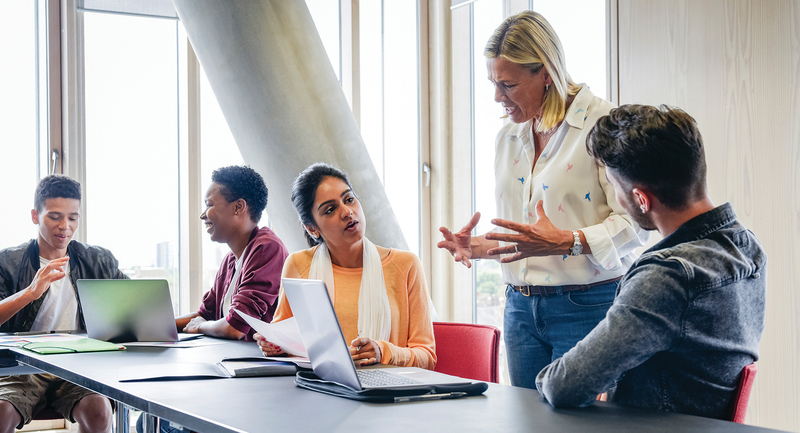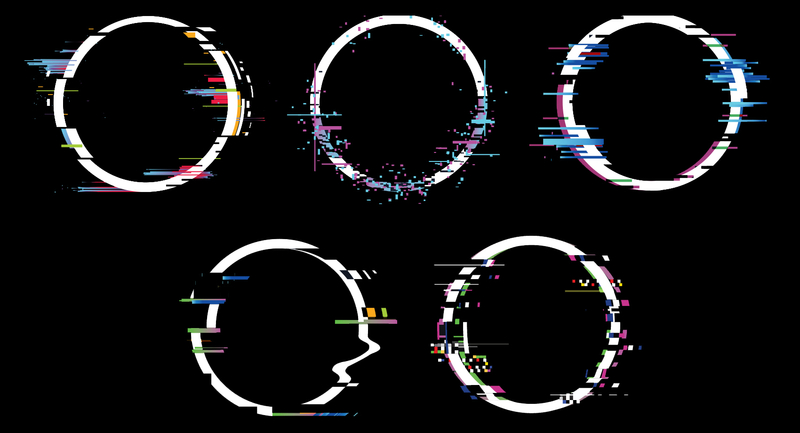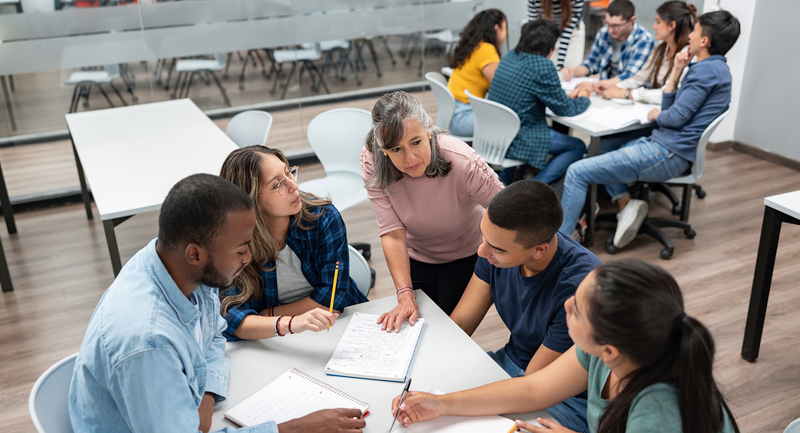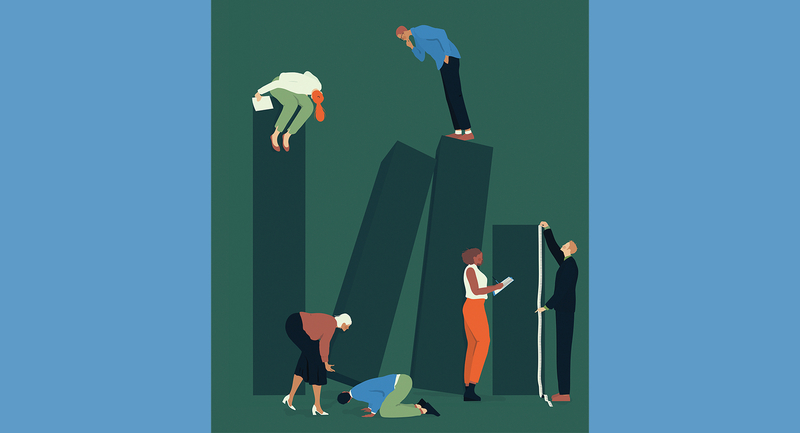In my third year of teaching, our 4th grade team began piloting ways for students to use iPads in class as part of a 1:1 learning initiative. I had an idea for a lesson in which students would circulate about the room engaging with science centers I'd set up on my classroom website. Each center allowed students to explore the use of simple machines in real life. In my head, it all made sense: Students would spend about 10 minutes at each center and then move to the next one, using their devices to explore a different simple machine.
When my class tried this, however, it was utter chaos. Students struggled to navigate the website, follow the multistep directions, and meaningfully explore each center. Off-task behaviors escalated as the noise level in the room crept up slowly but surely. It was clear that my vision of simplicity would not be the reality. To make matters worse, my principal popped in for a surprise walkthrough. Panic overtook my body, my palms began to sweat, and I could feel the temperature in my body rise.
"It's bombing!" I said as she walked in, throwing my hands up while chaos consumed my classroom.
A smile flickered across her face. She knew she had caught me at a moment of weakness, and I knew that she had previously experienced moments like this herself, having been a teacher for years before becoming an administrator.
"Not a problem!" she replied. "Let's find a time to chat about it later."
Not long after this observation, she and I debriefed that lesson. Together, we reflected on its strengths and challenges, leading me to a few realizations. For one, I had asked my students to do far too much with too much independence. Also, some of the technology I was using wasn't necessary, creating complexity that only worked against students and their productivity. The combination of these problems resulted in chaos and minimal learning.
Many educators would leave a debrief like this feeling crushed by shame or compromised by their vulnerability to failure. I didn't. I left strengthened by the thoughtful reflection that was possible because of the strong relationship my principal and I had built. That reflection was also possible because our school culture viewed risk-taking and mistake-making as the cradle of pedagogical innovation. Not only did I feel that it was OK to make a pedagogical error, I felt empowered to attempt this lesson again, making modifications that increased its scaffolding and more thoughtfully incorporated technology. My willingness to be vulnerable helped me get there.
Embracing Uncertainty and Risk
Brené Brown (2010), a popular author who writes about shame and vulnerability, defines vulnerability as "uncertainty, risk, and emotional exposure." People often want to avoid vulnerability. But it's hard to grow and connect with others—or to be a great teacher—if you can't make yourself vulnerable. To teach, ultimately, is to be vulnerable; it requires us to open ourselves up to the uncertainties of the human condition.
While the education field is growing in its capacity to encourage young learners to embrace uncertainty, make mistakes, and fail, we don't often encourage teachers to do this. My experience of being vulnerable around my principal was positive, but many teachers' experiences are not. After all, we live in an era obsessed with controlling and predicting student outcomes. This can work in opposition to valuing risk taking and openness to criticism. Many schools seem to be on a quest for invulnerability. They standardize practice in an effort to find pedagogical reliability and consistency. Some expect teachers to teach from a manual, assuming that controlling pedagogy will help them predict student outcomes. They measure their worth by standardized assessment scores and seem intent on using these metrics for competition.
Such practices dehumanize learning for young people, reducing it to test-centric practices like rote memorization and regurgitation of material. But this level of controlling pedagogy and predicting student outcomes also has detrimental effects on educators, especially new ones. It sends an implicit message that high-quality teaching is mindless—that if we follow a formula, we'll free ourselves from the potential to make mistakes. Yet freeing educators from the potential to err also limits their opportunities to become flexible and responsive, robbing them of opportunities to develop a growth mindset around curriculum and pedagogy.
Meaningful learning requires bumps in the road. Learning is most fruitful when we embrace the mistakes and pain that accompany novel territory. And learning how to become a teacher is a bit like inquiry-based or project-based learning: It's a never-ending problem-solving process, a series of questions that only lead to more complex, nuanced questions about students and their learning. It's a craft plagued with uncertainty, risk, and emotional exposure.
"Vulnerability," Brown says, "is the birthplace of love, belonging, joy, courage, empathy, and creativity. It is the source of hope, empathy, accountability, and authenticity."
Courage, belonging, empathy, creativity, and authenticity are qualities we want in all members of a school community. But often, new teachers are the ones least apt to take risks because the stakes are so high for them. They fear their job security or good standing will be threatened if they color outside the lines. If we want our newest educators to grow in their practice and stay in the classroom, we must make schools a place where educators can embrace uncertainty, risk, and emotional exposure—as my principal did for me.
Keep Accountability in the Picture
Providing more leeway for novices to take risks and mess up occasionally doesn't mean anything goes. Giving teachers space to make mistakes doesn't have to mean that administrators develop a lax attitude towards curriculum and pedagogy.
Vulnerability and accountability don't have to work in opposition to one another. To be vulnerable means to open up, but it doesn't mean a complete lack of structure or boundaries. My moment of vulnerability with my principal didn't teach me that I could make mistakes without consequence. The relationship I had built with my principal was one of boundaries and empathetic accountability. I knew that the next time I entered my classroom, I was expected to learn from my mistakes, to use my reflection on those moments of chaos to build a more informed, intentional pedagogy that would better support students. Embracing vulnerability brought that to me, my students, and my practice.
If we are to move into a new era of education—one where we value more highly the humanity that exists inside schools—we must invest in that humanity by incentivizing vulnerability. We should create experiences like the one my principal created for me—times when teachers can take calculated risks with their pedagogy and interact with equally vulnerable colleagues to improve their practice.
Investing in Educators' Humanity
Making this shift won't require an overhaul of pedagogy or investment in new curriculum or technology. Instead, it will require investing in the humanity that exists inside all educators (and that makes learning inherently personal and sustainable) and encouraging teachers' creativity and boldness. Here are three actions schools can take to do this, all of which require new teachers to embrace uncertainty, take risks, and allow emotional experiences to surface.
1. Create a Culture of Collective Efficacy
The science-centers lesson I described earlier was, without doubt, a pedagogical mistake. While I wasn't sure it would be a mistake while planning it, I realized it shortly into the lesson. I was lucky to be on a team of teachers in the midst of a pilot, so I felt safe making this courageous mistake: I knew my team and my principal wouldn't judge or shame me for trying something new, even if it flopped. But too many teachers don't experience the uncertain, uncomfortable planning and implementing process that accompanies innovative pedagogy.
In John Hattie's Visible Learning, (2015), he states that collective teacher efficacy has one of the most substantial impacts on student learning. Collective efficacy is the shared belief by a group of teachers that they can positively impact student learning. My team and I believed that we could make a difference through taking risks and learning from mistakes, and this belief wouldn't have been possible without embracing our vulnerability. A group of teachers' mere belief that they can eventually have an impact requires comfort with uncertainty; they must be comfortable with the fact that they may not always get it right the first time.
2. Take Courageous and Calculated Risks—and Reflect on Them
Willingness to take risks doesn't mean teachers should make mistakes haphazardly. Some mistakes we can avoid—like ones that are the result of carelessness or not thinking something through. By contrast, when we make courageous, calculated decisions, we leverage research around best practice and combine it with the "action research" we conduct in our classrooms every day. We take into account our students' identities and our own pedagogical journeys.
Self-reflection is an important part of taking calculated and courageous risks, especially when they result in mistakes. In our discussion after my botched lesson, my principal provided me the opportunity to reflect on why my lesson plan didn't work. Many coaches and mentors provide this opportunity as they work with teachers one-on-one. Through self-reflection, educators can connect their efforts at pedagogical innovation to their successes and missteps, building both the capacity to enact change in their practice and the emotional capital to share with others the lessons that come from mistakes. Research shows that when students reflect on their learning, it helps that learning be more meaningful and long-lasting. This is true for practicing teachers, too (Darling-Hammond et. al, 2017).
3. Share Your Identity
Vulnerability needn't end with sharing one's teaching practice. To truly feel safe being vulnerable about our practice, we must also feel safe and comfortable being ourselves. This means our schools must be culturally responsive institutions where all are welcome, regardless of their racial or ethnic background, sexual orientation, or other group identity.
In Culturally Responsive Teaching and the Brain, Hammond (2014) refers to selective vulnerability. When we are selectively vulnerable, we choose pieces of ourselves to share with our students and colleagues. These could be stories from our childhood, successes, failures, or aspects of our cultural identities that humanize us. Through selective vulnerability, we show one another that we, too, are human beings, wrought with imperfection. This helps us forge relationships in which colleagues and students alike feel comfortable being themselves and taking risks.
To make courageous mistakes, we need to know, first and foremost, that we belong. When we don't feel like we belong, any stumble or moment of weakness can seem like a costly mistake. But when we get to know one another personally, we inherently want to support one another because we begin to care about one another. We begin to trust that others will support us.
An Age of Empathy
In his book, The Empathic Civilization (TarcherPerigee, 2010), social theorist Jeremy Rifkin posits that we are entering an uncertain but hopeful time he calls "The Age of Empathy." Societies are moving beyond ruthless rationalism and industrialization. Technology has created an unprecedented sense of global connectedness. For many people now, success isn't defined by how much money a person amasses, but by the positive impact they leave on the world.
This shift necessitates a change in the way we run our schools—in what we value and how we teach students. So it also necessitates a change in how we prepare and guide new teachers, who are laying the foundation for the future. To prepare students for this era of global connectedness with its focus on empathy and contributing to the world, educators must start by opening ourselves up to its uncertainty. We must acknowledge the value of vulnerability and use it to power innovation and human connection in our schools.








